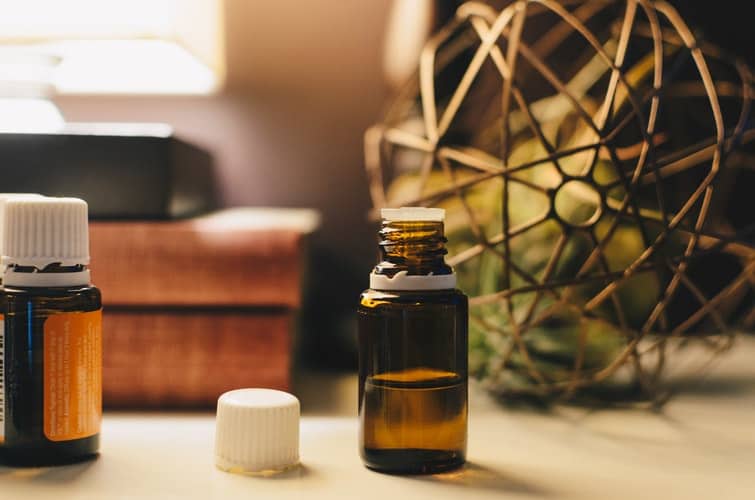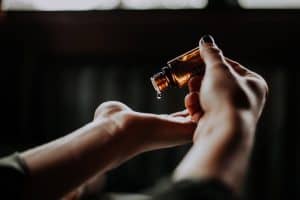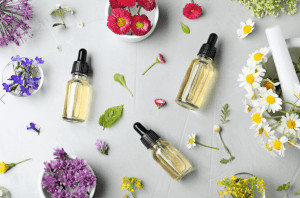Pure Australian Tea Tree Oil Uses Explained

The way in which the tea tree oil manages to combat scalp ailments is simple. The uses of tea tree oil for hair are many, it has strong anti-bacterial and anti-fungal properties, due to its chemical composition. In regards to its uses in dermatology, tea tree shampoo has been shown to act even against certain antibiotic-resistant infections, and it has gained the admiration and respect of many dermatologists worldwide, which is why it’s necessary for us to talk about pure Australian tea tree oil uses.
In a study conducted in Australia in 2001, and subsequently published in the Journal of Antimicrobial Chemotherapy, it was shown that “using several different methods, this study has illustrated that tea tree oil has fungicidal activity. Few previous studies have comprehensively investigated the activity of tea tree oil against dermatophytes and filamentous fungi” (K. A. Hammer, C. F. Carson, and T. V. Riley)
What To Do With Australian Tea Tree Oil?

Tea tree oil for anti-dandruff.
In order to obtain an extract of a tree or plant, one must first immerse the plant in a liquid – or otherwise, treat it – in order to isolate and extract whatever the desired quality is. It could be a scent, a flavor, a texture. This is why extracts are used more in the realms of food and fragrance.
A plant’s essential oil is obtained by means that are very different than those of extraction. Unlike plant extraction, it is not a specific attribute of the plant that is sought, but rather the essence of the plant itself. This is done through the process of distillation. Large amounts of plant parts are required in order to distill even a small amount of essential oil, which is why essential oils are usually much more expensive than extracts.
Through the process of distillation, the various tea tree oil uses are able to be preserved. The leaves are left to wilt and dry for several days, and are then put through a boiler and steam distillation set.
The chemical makeup and main ingredient of the tea tree’s oil are what gives it its unique benefits. Different chemical families affect human beings in various ways, and when it comes to essential oils, many of them are based on terpenes. Terpenes are an organic compound, and they are produced by many different types of plants, as well as several insects. There are ten different types of terpenes, and a few examples are:
Monoterpenols
Found in many essential oils, this compound has anti-bacterial and anti-fungal properties. This includes the Australian tea tree oil, which contains in it the monoterpenol terpinene-4-oil as its main ingredient.
Monoterpenes
A compound that is similar in some ways to monoterpenols. Some monoterpenes – such as the alpha-pinene, which is found in pines, rosemary, and cannabis – are known to have benefits for conditions like asthma. Alpha-pinene is a pain relieving and anti-inflammatory compound.
Sesquiterpenes
This type of terpene class has the potential to treat cardiovascular diseases and even cancer. It has anti-inflammatory properties and is also suggested to be anti-microbial and to inhibit the growth of certain harmful bacteria and fungi. More studies are being conducted on the role of sesquiterpenes in medicine.
Tea Tree Oil For Hair Explained

Woman with healthy hair.
Oil for hair? Yes, there is at least one oil which is extremely popular in the world of scalp and hair (and their respective issues), melaleuca alternifolia, also known as tea tree oil. This oil for hair hails from Australia, where the native Aboriginals have been using it for over 100 years as a remedy for a wide range of medical conditions, internal and external, including tea tree oil for hair.
The tea tree has many therapeutic benefits. Its value, whether in the form of essential oil or plant extract, is unquestionable and undeniable. Studies are still being conducted on the various benefits that its advocators claim it to hold, but so far the oil is not coming off bare and is proving itself in the clinical trials. There is a big difference, however, between a plant’s essential oil and a plant extract.
Tea Tree: Anti-Fungal, Pro Healing
Anti-inflammatory, antifungal (general), antimicrobial, antioxidant, anxiety, body odor, boils, bone diseases (osteomyelitis), bruises, burns, canker sores, contraction cessation (stopping labor contractions), corns, food preservation (lettuce), immune function, impetigo (bacterial skin infection), inflammatory skin conditions, insect bites and stings, insecticidal (dust mites), lung inflammation, melanoma (type of skin cancer), muscle and joint distress, prostate inflammation, root canal treatment, scabies (itchy skin from mites), solvent, ulcers, upper respiratory tract infections.
As the Australian researchers said, there is not enough clinical data to fully support tea tree oil’s role in the treatment of these (and many other) maladies. “If stable, biologically active formulations of TTO are going to be developed, much remains to be done.”
So, yes, there is a lot to be done in the realm of diseases such as cancer and immune function, but managing and/or eliminating dandruff is something which tea tree oil can probably help out with.
Tea Tree Oil And Other Essential Oils

An assortment of essential oils.
Essential oils are best applied in lotion form, gel, or cream. Gels are a great solution since vegetable oils play a big role in nourishing dry areas and maintaining overall scalp health. This is especially essential once the infection has healed, and the body needs time to recover before returning to its natural state.
Lotions can prove to be a fruitful treatment for some fungal infections, but at times lotions can have a slightly drying effect on the skin. This effect changes from one individual’s skin to another, and it could be found out by using a lotion for a trial period and watching for the outcome.
Powders are also a viable option, but they must be ground to a very fine powder in order to avoid any caking. That could be counter-productive and end up blocking the sebum coming out of the sebaceous glands altogether. That could cause even more problems, and start a new cycle of inconvenience. Hardly the desired outcome.
Get your very own 100% Pure Tea Tree Oil on sale now at Maple Holistics


